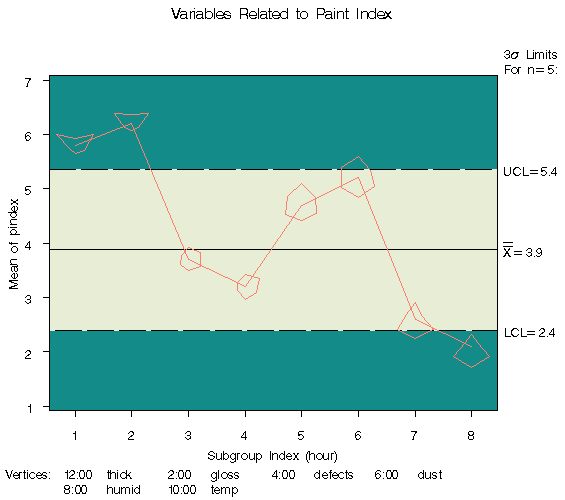Chapter Contents
Previous
Next
|
Chapter Contents |
Previous |
Next |
| Graphical Enhancements |
| See SHWSTR1 in the SAS/QC Sample Library |
The following statements create the star chart shown
in Figure 47.16:
title 'Variables Related to Paint Index';
proc shewhart history=paint limits=paintlim;
xchart pindex*hour /
nolegend
starvertices = (thick gloss defects dust humid temp
cframe = vibg
cinfill = ywh
cconnect = salmon
cstars = salmon;
run;
The stars are centered at the points for average paint index, and the distance from the center to a vertex represents the standardized value of the variable corresponding to the vertex. The star chart reveals that relatively high values of gloss (two o'clock) and temperature (ten o'clock) are associated with high out-of-control averages for paint index. Likewise, relatively high values of defects (four o'clock) and humidity (eight o'clock) are associated with low out-of-control averages for paint index. The star shapes reveal similarities in the data for runs 1 and 2, runs 3 and 4, runs 5 and 6, and runs 7 and 8.

|
|
Chapter Contents |
Previous |
Next |
Top |
Copyright © 1999 by SAS Institute Inc., Cary, NC, USA. All rights reserved.